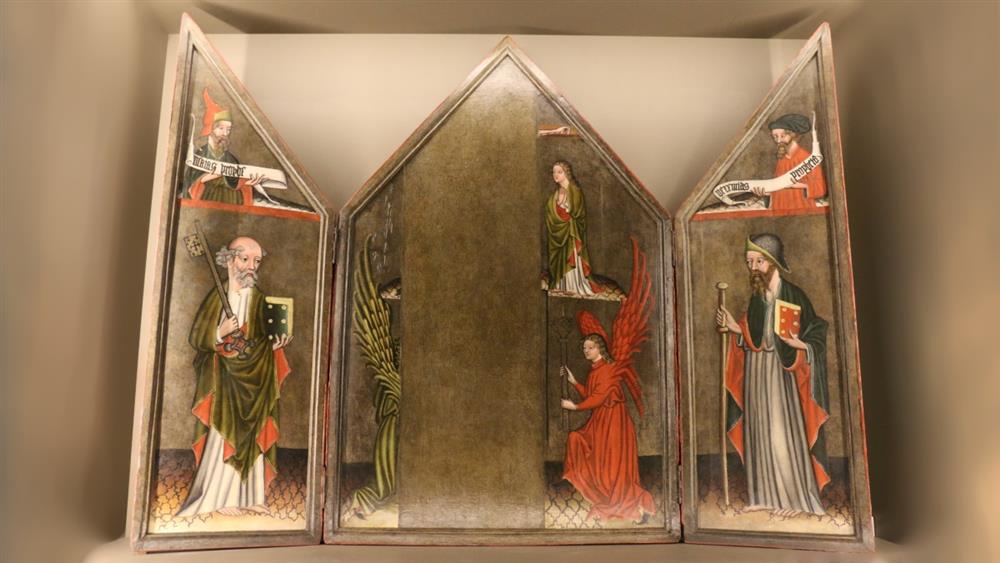02.12.2016 | On the occasion of the 700th anniversary of the birth of Charles IV, the National Museum has prepared an exhibition that will transport visitors to the society of the times of Charles IV and introduce the cultural, artistic, economic and social developments that began this era. Before being exhibited, many objects went through the hands of restorers. We would like to introduce the largest fully restored object in the exhibition.

The Slavětín altar, or the ark from Slavětín, is one of the few extant Ultraquist triptych altarpieces. The Utraquists were the dominant Hussite movement of 15th-century Bohemia. Reception of the Holy Communion under both kinds became the central focus of Utraquist liturgy until the Roman Curia allowed the use of the chalice in 1564; this was what the Utraquist had in common with other reformist movements that diverged radically from the Catholic church. However, unlike the other reformist movements, Utraquism insisted on the Apostolic Succession. According to this principle, the Utraquist church could not appoint bishops or ordain clerics without the approval of the Pope. Gradually, this movement also split into two parts. One of them was assimilated within the Catholic Church, while the other gravitated towards more radical movements. Like the other Calixtine movements, it was suppressed violently after the Battle of the White Mountains in 1620, and re-Catholicized.
During the re-Catholicization after 1620, the majority of Utraquist triptych altars were destroyed. Only ten pieces have survived in fragments to this day. Their iconography is always the same - a pair of angels holding between them a tabernacle or a chalice, administering the Eucharist. The oldest extant altar of this kind is the one from Slavětín, which is deposited in the collection of the National Museum. It was created in 1450 and was preserved, albeit in a damaged state, in Slavětín. Its central part, with Christ on the Cross and possibly with a tabernacle, was destroyed. The main board even bears the mark of a cutting weapon. The altar was renovated several times in the past, most recently in the 1980s. However, this restoration work was not sufficient, and that is why it has been restored again this year.
A detailed technical examination of the altar was conducted during the restoration work, which revealed many interesting facts. Some even shed light on matters that have been disputed by experts until now. A publication is being prepared for next year that will summarize all the new findings about this unique work of art.

(EK)
Archeologie Historie Hudba Lidová kultura Mimoevropské kultury Osobnosti Přírodní vědy Rekonstrukce Restaurování Rukopisy a tisky Umění Vánoce Výstavy
Muzeum 3000, zpravodajský portál Národního muzea, odhaluje jedinečná tajemství. Více se dozvíte zde!